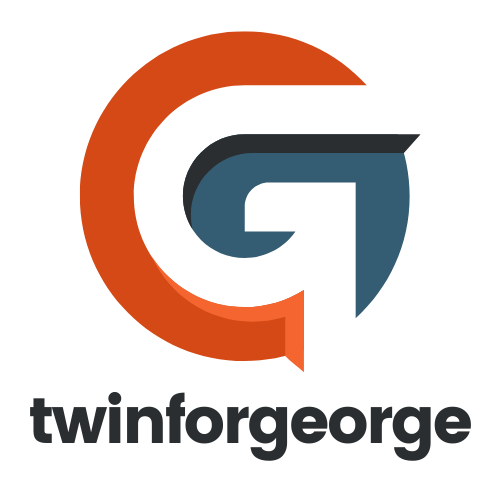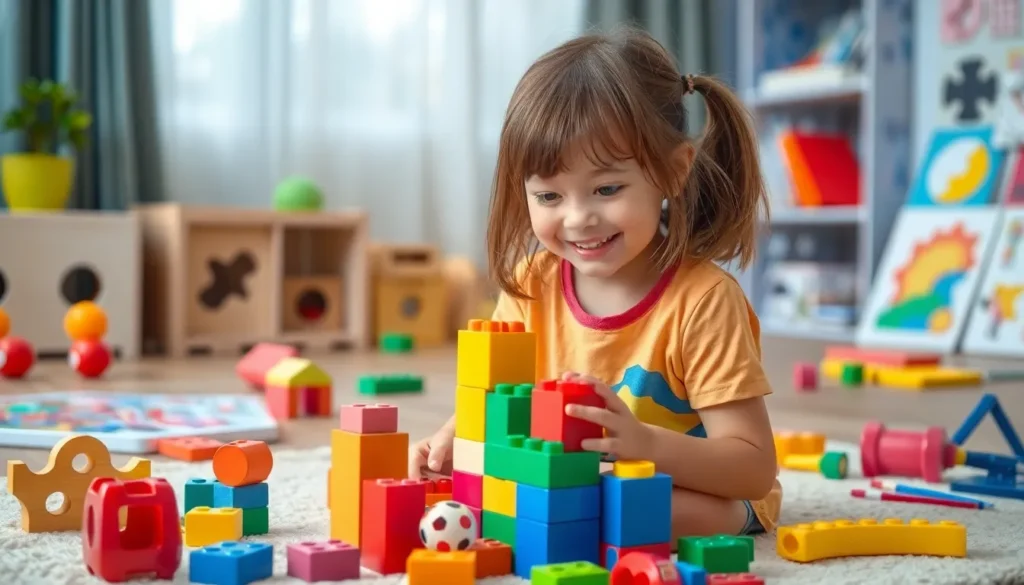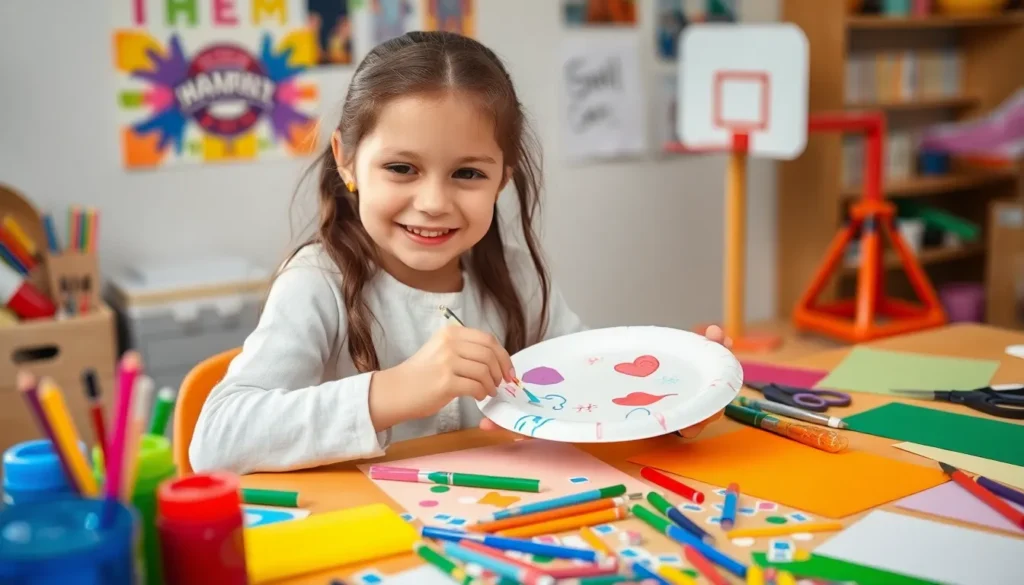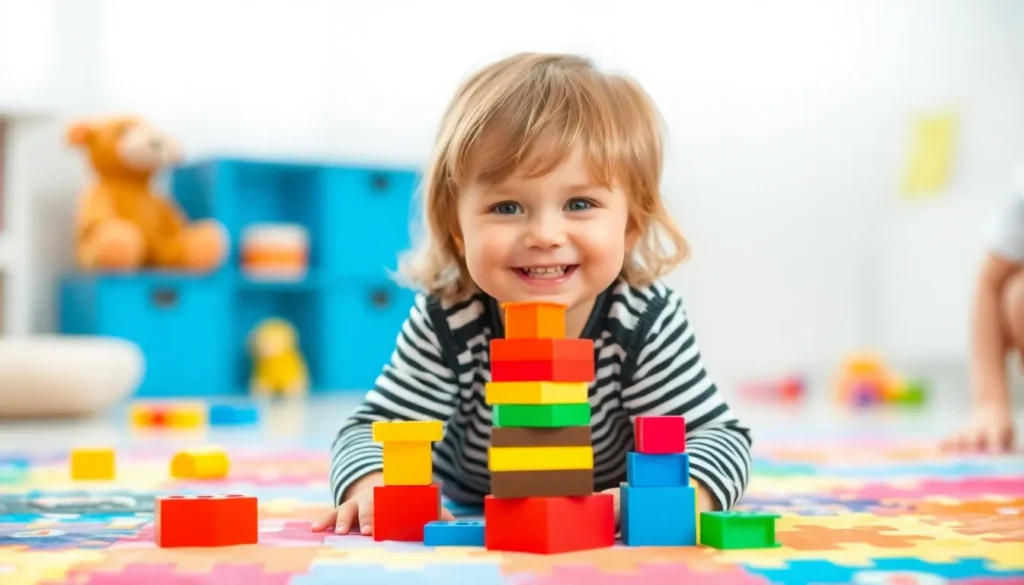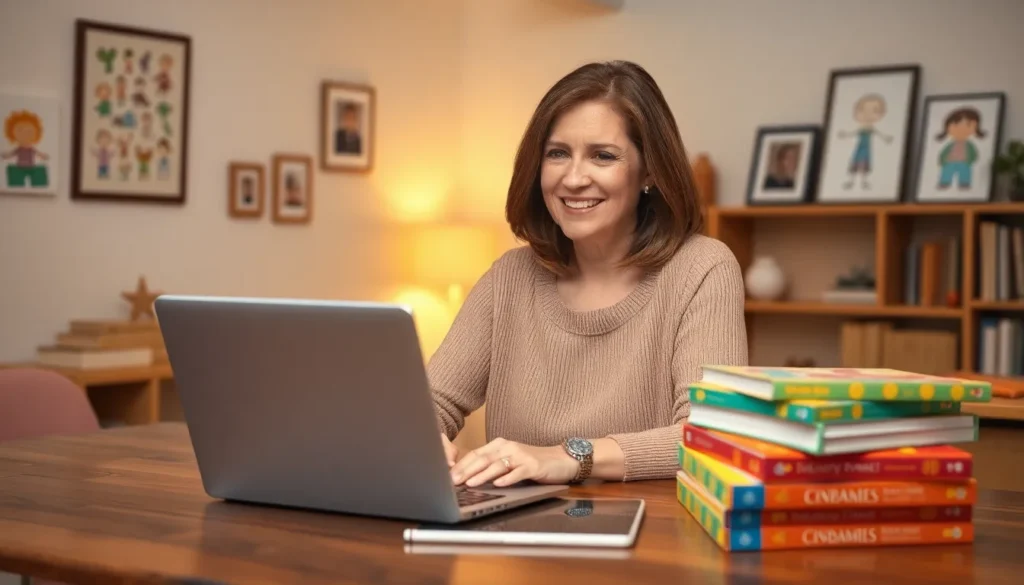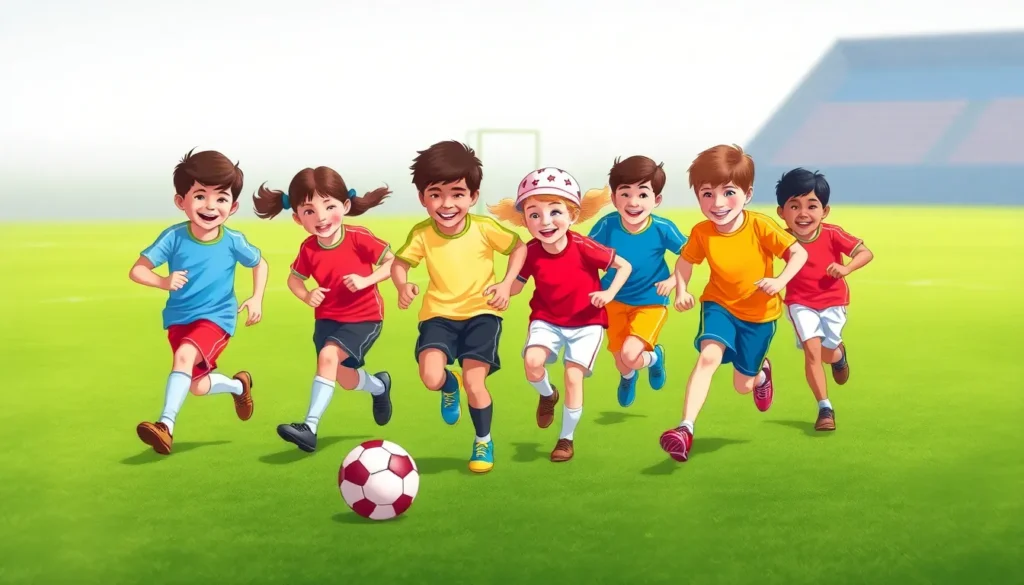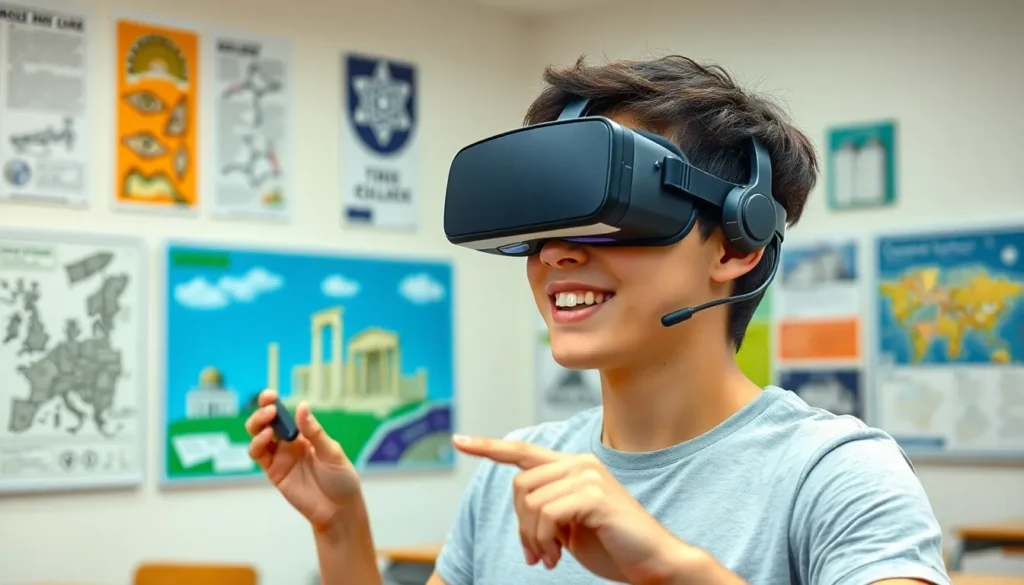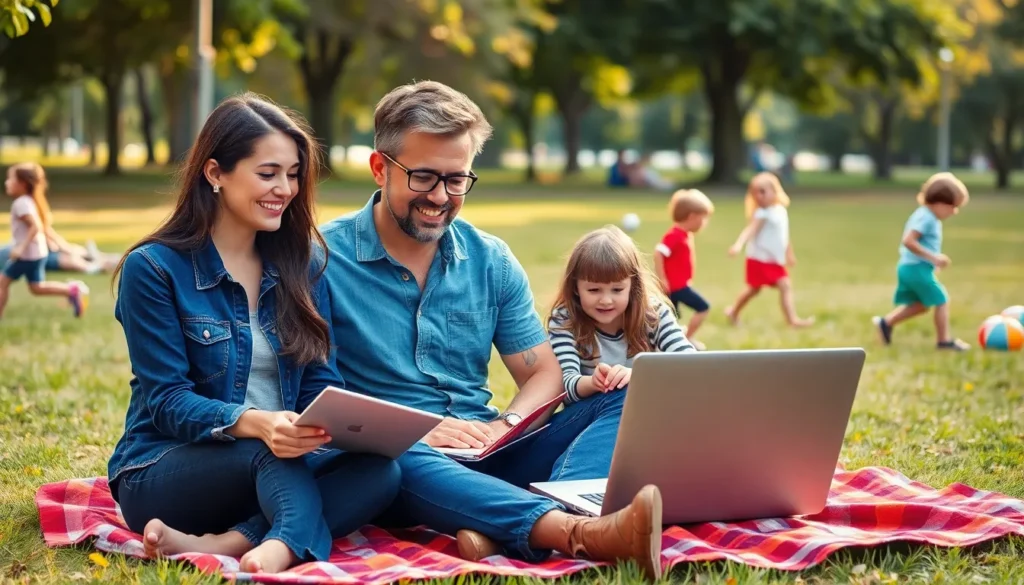Finding the perfect educational toy for a spirited two-year-old can feel like searching for a needle in a haystack. With endless options that promise to be the next big thing in learning, it’s easy to get overwhelmed. But fear not! The right toys can turn playtime into a mini classroom, where giggles and learning go hand in hand.
Table of Contents
ToggleBest Educational Toys for 2-Year-Olds
Selecting educational toys for two-year-olds involves finding items that promote development and spark curiosity. Engaging activities stimulate critical thinking, motor skills, and social interaction.
- Building Blocks: Building blocks encourage creativity and fine motor skills. Children stack and balance while learning about shapes, sizes, and colors.
- Puzzles: Simple puzzles enhance problem-solving abilities and hand-eye coordination. Choosing wooden puzzles with large pieces makes them user-friendly for toddlers.
- Shape Sorters: Shape sorters introduce basic geometry while improving dexterity. As toddlers fit shapes into appropriate slots, they grasp spatial relationships.
- Musical Instruments: Simple instruments like maracas and tambourines promote auditory skills and rhythm. Playing music fosters self-expression and interactive play with others.
- Art Supplies: Crayons and washable markers inspire creativity and self-expression. Engaging in art helps develop fine motor skills and encourages imaginative play.
- Books: Interactive board books with textures and flaps promote literacy and early language skills. Regular reading sessions enhance vocabulary and comprehension.
- Pretend Play Sets: Kitchen sets or tool sets support imaginative role-playing. Such toys encourage social skills, cooperation, and understanding of everyday tasks.
- Educational Tablets: Devices designed for toddlers provide interactive learning experiences. These tablets often feature games that teach numbers, letters, and problem-solving.
Prioritizing age-appropriate toys ensures safety and maximizes developmental benefits. Each toy should match the child’s interests, fostering motivation and joy during learning. Selecting from this list offers a well-rounded approach to education through play.
Types of Educational Toys
Educational toys come in various forms, each serving unique developmental purposes for two-year-olds. Understanding these types helps in selecting effective tools for learning through play.
Building Blocks
Building blocks promote creativity and fine motor skills. Children can stack blocks to construct different shapes and structures. Engaging with these toys enhances spatial awareness. It also encourages problem-solving as children figure out how to balance pieces. Various shapes and colors stimulate cognitive development. Offering a variety of building block sets can enrich the play experience.
Puzzles
Puzzles enhance problem-solving abilities and hand-eye coordination. Simple wooden puzzles with large pieces help toddlers recognize shapes and images. Fitting pieces into the correct spots develops critical thinking. Exploration leads to increased patience and perseverance as children work to complete puzzles. Using puzzles with varying difficulty levels can maintain engagement and challenge young minds.
Shape Sorters
Shape sorters introduce basic geometry and improve dexterity. These toys typically contain various shapes that fit into corresponding holes. As children manipulate the shapes, they learn about differences in form and size. This hands-on experience enhances cognitive skills and encourages independent play. Diverse shape sorter options keep learning fresh and exciting, fostering essential developmental growth.
Benefits of Educational Toys
Educational toys offer significant advantages for two-year-olds, merging play and learning into valuable experiences. Selecting the right toys fosters curiosity and supports various areas of development.
Cognitive Development
Cognitive growth flourishes through interactive play. Engaging with toys like puzzles cultivates problem-solving skills. Shape sorters introduce basic concepts of geometry while enhancing shape recognition. Simple board games invite children to follow rules, reinforcing critical thinking. Through musical instruments, kids explore sounds and cause-and-effect relationships, sharpening their auditory processing. Thus, educational toys stimulate cognitive skills that serve as a foundation for future learning.
Motor Skills Enhancement
Motor skills receive robust support from toys designed for tactile interaction. Building blocks encourage children to stack, balance and construct, enhancing dexterity and coordination. Manipulating shape sorters strengthens hand-eye coordination through precise movements. Art supplies, such as crayons, initiate fine motor practice as toddlers grip and control tools for creative expression. Musical instruments, like drums or xylophones, promote rhythm and coordination. These activities build essential motor skills, positively impacting everyday tasks and physical development.
Top Picks for Educational Toys
This section highlights excellent choices for educational toys that boost a two-year-old’s development while keeping playtime fun.
Building Blocks
Building blocks serve as a versatile tool for creativity and fine motor skills. Stacking and balancing pieces encourage spatial awareness and problem-solving abilities. These toys come in various shapes and sizes, allowing children to explore concepts like balance and coordination. Soft, lightweight options ensure safety during play. Parents appreciate how building blocks help develop dexterity as young hands grasp, lift, and manipulate different pieces. Engaging with building blocks opens endless possibilities for imaginative construction, making them a top choice for educational play.
Shape Sorters
Shape sorters excel in teaching basic geometry while enhancing dexterity. Young children engage with colorful shapes, learning to identify and match them with corresponding holes. This activity fosters cognitive skills, such as shape recognition and spatial reasoning. Some shape sorters also feature textures and sounds, adding sensory experiences that captivate toddlers’ attention. Additionally, shape sorters provide opportunities for cooperative play, encouraging social interaction with peers and caregivers. Their straightforward design helps children feel a sense of accomplishment as they fit shapes correctly.
Musical Instruments
Musical instruments introduce toddlers to rhythm and auditory skills in an engaging way. Instruments like maracas, xylophones, and tambourines allow children to explore sound and movement. Playing music nurtures creativity as kids express themselves through rhythm and melody. Instruments come in various materials, ensuring safe play for curious little hands. Engaging with these toys promotes listening skills and encourages emotional expression. Many parents enjoy watching their children experiment with sounds, creating a joyful atmosphere that combines fun and education.
Tips for Choosing the Right Toy
Selecting the right educational toy involves evaluating several key factors. Consider developmental stage and growth opportunities for two-year-olds. Look for toys that promote fine motor skills, creative expression, and cognitive challenges. Prioritize safety and age-appropriateness to prevent hazards and ensure enjoyable play.
Toys that are durable and made from non-toxic materials contribute to safer play environments. Explore options that encourage exploration and curiosity. Building blocks serve as an excellent choice, as they enhance spatial awareness and foster imaginative play. Puzzles can stimulate problem-solving abilities while improving hand-eye coordination.
Observe the child’s interests during playtime. Matching toys to personal preferences increases engagement and motivation. Interactive toys, such as musical instruments, invite sensory exploration and rhythm development. Art supplies, like crayons, inspire creativity and nurture artistic expression.
Think about social interaction benefits. Toys that promote cooperative play, like simple board games, encourage sharing and teamwork. Pretend play sets facilitate role-playing and social skills development. Consider educational tablets as tools for guided learning experiences and interactive engagement.
Evaluate the toy’s educational value against entertainment. A balance between fun and learning enriches the play experience. Choose toys that inspire curiosity and creativity while supporting the child’s cognitive development. By focusing on these elements, caregivers can confidently select the best educational toys for two-year-olds.
Finding the right educational toys for two-year-olds can transform playtime into a rich learning experience. By selecting toys that blend fun with developmental benefits caregivers can nurture creativity curiosity and essential skills. Each toy type offers unique advantages from building blocks that enhance spatial awareness to puzzles that foster problem-solving abilities.
Prioritizing safety and age-appropriateness ensures that play remains enjoyable and beneficial. Observing a child’s interests can further guide choices leading to more engaging play. Ultimately the best educational toys not only entertain but also inspire growth and exploration laying a strong foundation for lifelong learning.
